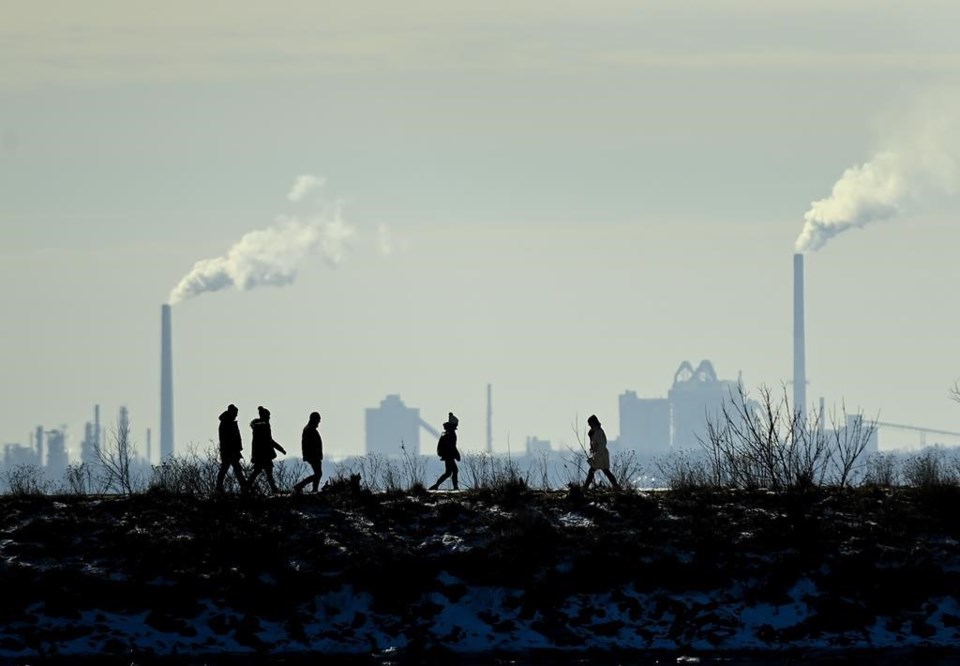TORONTO — Ontario's first case of a highly transmissible COVID-19 variant that originated in Brazil was discovered in Toronto on Sunday, the day before the province was expected to unveil its plan to emerge from a month-long state of emergency.
The patient, who is now hospitalized, had recently returned from travelling in Brazil, Toronto Public Health said in a news release.
"TPH advises Torontonians to be extremely mindful of time spent outside your household with anyone who doesn’t live with you," the agency said, noting that there are several concerning variants of the virus that are thought to be more transmissible than the original.
The agency also found its first case of another variant of concern, which first emerged in South Africa.
That variant had already been detected in Peel Region, just west of Toronto.
"This case has no recent travel history and has had no known contact with anyone who is a returned traveller," the public health agency said.
Public health officials have said a third contagious variant — one that first emerged in the U.K. — is far more prevalent in the province than those from Brazil and South Africa.
A single-day snapshot from January found that the variant from the U.K. accounted for 5.5 per cent of all positive COVID-19 cases, and that percentage is expected to rise quickly.
As of last week, the province has been screening all positive cases to see if they can be tied to one of the variants.
As of Sunday, the province had counted 176 confirmed cases of the variant from the U.K., and one of the variant from South Africa, not including Toronto's new case.
Most of the variant cases are in the Simcoe Muskoka District Health Unit, where an outbreak ripped through a Barrie, Ont., nursing home killing more than half of the residents and an essential caregiver.
Officials say the presence of these variants of concern make public health measures meant to curb the spread of the virus even more vital.
Even so, Premier Doug Ford is set to announce plans Monday to gradually reopen the province from a lockdown and stay-at-home order.
A senior government source who was not authorized to speak publicly about the plan said the government intends to transition back to the tiered, colour-coded model of restrictions in the coming weeks.
The source said four public health regions with low transmission rates are expected to move to the least-restrictive green category on Wednesday, and remaining regions would move into a colour-coded category in the week of Feb. 15, depending on local case counts.
That excludes the hot spots of Toronto, Peel and York regions, where the stay-at-home order will remain in place until the week of Feb. 22 or later.
Also Monday, schools will be allowed to reopen across much of southern Ontario.
Education Minister Stephen Lecce said last week that students in 13 public health units, including Hamilton and Windsor, Ont., will resume in-person learning on Monday.
Schools in Toronto, Peel and York region will remain closed until Feb. 16, he said.
Lecce said the province made its reopening decisions based on advice from local medical officers of health and Ontario's top doctor.
All students in Ontario began January with online learning as part of a provincial lockdown.
The province then took a staggered approach to reopening schools, allowing those in northern Ontario and rural areas to resume in-person learning first.
Lecce said the province has added a number of safety measures, including asymptomatic testing and enhanced screening for secondary students and staff.
The province also announced on Sunday that it would expand emergency child care to more front-line workers. The free child-care now available to health-care, education and postal staff will be extended to some construction and transit workers in Toronto, York Region and Peel beginning Tuesday.
The province logged 1,489 cases of COVID-19 on Sunday, and 22 more deaths.
This report by The Canadian Press was first published Feb. 7, 2021.
Nicole Thompson, The Canadian Press
